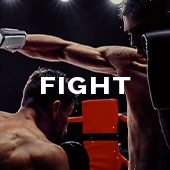By Michael Marley
When his former running buddy Bob Arum heard Thursday about the death of versatile boxing figure Gil Clancy at age 88, the head of Top Rank had mixed emotions.
"People are saying to me, 'you must be sad.' In a way, I am sad but I will always have the great memories of all the trips, all the fights and all the fun we had, especially doing shows in great places like Monte Carlo and in Italy," Arum said Thursday night.
"One experience that stands out is that Gil and I wanted to get into this fancy club in Monte Carlo called Jimmy's. We couldn't get past the front door but, when we brought the great champion Emile Griffith with us, we got a prime table."
Clancy, whose long career included managing, training, TV commentating, matchmaking for Madison Square Garden and buying fights for CBS when boxing held sway on all three over the air networks, was a former high school physical education teacher who always found a way to get paid in boxing which is not so simple.
Arum recalled when the CBS boxing broadcast team consisted of three men who liked to party--heavyweight contender Irish Jerry Quarry, football star and Hall Of Fame tippler Tom Brookshier and Clancy.
"Those three taught a Jewish guy how to really drink," Arum said. "Gil was just a great, great guy. He and I bonded from the start. I worked with (promoter) Rodolfo Sabbatini in Italy and we did two shows a month in the beautiful locations in Europe.
"I'd go into CBS and tell Gil and Mort Sharnik, 'I got a fight between (Victor) Galindez and Eddie Gregory (later Eddie Mustafa Muhammad).' They would say, 'Eh, that's an OK fight.' Then I said, 'We're doing it in Villa Reggio, Italy. Then they would say, 'Ah, now that's a great fight.'"
While Clancy was buying bouts for CBS, he and Arum entered into a business partnership but it involved four-legged athletes, not two-legged boxers.
Clancy was a racetrack habitue, a Long Island guy who loved to roam around both Belmont and Aqueduct. He talked Arum into investing money in some racehorses.
"Of all the horses we had, only one ever won a race. The name was 'Virginia something' and it was rainining and all muddy at Aqueduct but Gil and I were in the winner's circle acting like our horse just won the Kentucky Derby," Arum said.
Arum related another anecdote involving the middleweight champ from Colombia, rugged Rodrigo Valdes. Valdes would've been the world's best at 160 pounds if not for the existence for a formidable Argentinean named Carlos Monzon. (Some consider Monzon the greatest ever at 160 pounds with no apologies to immortal Ray Robinson.)
"We'd come back to New York after a Valdes fight and he insisted he get all his money in cash from the bank. That was OK but then he stuffed all the dollars in a paper bag and flew back home. We told him he was crazy but he wound up owning a lot of real estate and most of the bus lines around Cartagena, not bad for a guy who was basically illiterate."
Clancy's first top fighter was Gillette Friday Night Fight perennial Ralph "Tiger" Jones. Over the years, besides Griffith and Valdes, he also worked with Gerry Cooney, George Foreman, Oscar De La Hoya, Tom "The Bomb" Bethea and many more.
Back in the mid-60s, before Clancy was involved with club shows at the National Martime Union in Manhattan and then operating the Telstar Gym, he was an influence on four pesky teenagers who had been bitten by the boxing bug.
One of those kids became legendary agent/matchmaker Johnny "Wizard Of" Bos.
Another was globetrotting agent and WBC adviser Don Majeski.
The third was underground boxing newsletter muckraker Malcolm "Flash" Gordon.
The fourth was a fresh-faced New Jersey high school wrestler who went to Ohio University to sutdy journalism and worked corners for fighters on the side. His name is Bruce "Southland" Trampler, he worked under Clancy at the Garden and has been Arum's matchmaker for decades.
"Gil would see me at the gym and say he was going to report me for playing hooky from school," Bos said. "He was only teasing, I think. I was a 6-3, 185-pounder who wanted to fight but I was age 14, too big for guys my own age and not strong enough for grown men."
Majeski has fond memories of both Clancy and those days at the Telstar, which was right across the street from the boxing mecca that was MSG.
"Gil was a rollicking guy, I never saw him try to hurt someone.," Majeski said Thursday. "I think Wilfredo Benitez was training with his brothers at Telstar when he was age 12 (Benitez won a world title at 16). Ismael Laguna from Panama was in there with Valdes, Jorge Ahumada, Esteban DeJesus from Puerto Rico and local guys like Johnny Persol. Then guys like the young George Foreman would show up."
Telstar was their fistic college and Clancy, the schoolteacher, was the professor.
"Gil did so many different things and always did them well," Trampler said. "To be an understudy to the great Brenner and then work with Gil was the greatest boxing education any guy could have. Teddy and Gil were different, Gil much more the politician and schmoozer but they both knew fights, fighters and how to develop stars. I missed Teddy and now we will all miss Gil."
RIP, Mr. Clancy, 88 is a good round number for a guy who left an indelible imprint on boxing.

